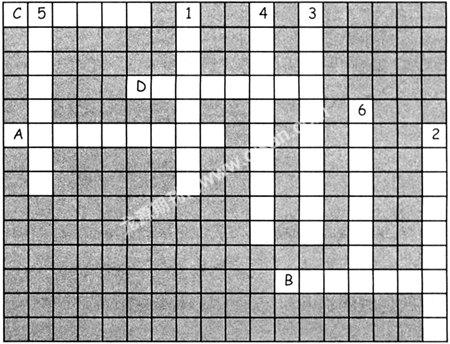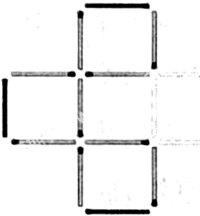Hearing Starts in Throat
2008-11-26
Ears are for hearing-everyone knows that. But for a creature called the Cuvier's beaked whale, hearing starts in the throat, a new study finds.
The observation might help explain how all whales hear, researchers say. The work might also help scientists understand how animals are affected by underwater sonar. This radar-like technology, used by some ships, sends out sound waves to detect and locate underwater objects.
The Cuvier's beaked whale belongs to a group called toothed whales. Toothed whales dive deep into the ocean in search of food. As the whales hunt, they produce sounds that bounce off objects and then return to the whales. This process, called echolocation, allows the animals to "see" the shape, size, and location of their prey, even when they're 1000 meters deep under the sea, where it is totally dark.
To better understand how the whale hears, researchers from San Diego State University in California took three-dimensional X rays of two dead Cuvier's beaked whales and used the images to create a computer model of a Cuvier whale's head. Then, they modeled the process of sound traveling through the head.
When the researchers used their computer model to track how sound waves travel in the whale's head, they were surprised to find that sounds coming from right in front of the whale actually travel under the animal's jaw. From there, sound waves move through the throat, into a hole in the back of the jaw, and finally to the pad of fat near the animal's ears.
用喉咙听声音
每个人都知道,耳朵是用来听的。但一项新的研究发现,对于一种叫做鹅嘴鲸的生物来说,听的过程是从喉咙里开始的。
研究人员说,进行观察可能有助于解释鲸鱼是怎样听的。这项研究有可能帮助科学家弄懂水下声呐对动物的影响。声呐在技术上与雷达相似,有些船只使用声呐,通过发射声波的方法探测并确定水下物体的具体位置。
鹅嘴鲸属于齿鲸一类。齿鲸寻找食物时要潜到海洋深处。当齿鲸猎食时,它们会发出声音,其声波会从物体上反弹回来,回到鲸鱼那里。这个叫做回声定位的过程,使鲸鱼即使在水下1000米处完全黑暗的地方也能“看见”它们的捕食对象的形状、大小和所在位置。
为了更好弄懂鲸鱼是怎么听的,位于加利福尼亚州的圣地亚哥州立大学的研究人员对两头已死的鹅嘴鲸拍摄了三维X射线照片,利用这些图像制作了一个鹅嘴鲸头部的计算机模型。然后,他们模拟了声音通过鲸鱼头部的过程。
当研究人员利用计算机模型跟踪声波通过鲸鱼头部的过程时,他们惊奇地发现,在鲸鱼正前方的声音实际上是通过鲸鱼的颌下传进来的。声波从颌下通过鲸鱼的喉咙,进入颌后面的一个孔,最后才传到鲸鱼耳朵旁边的一块脂肪上去。(注意斜体词的译法)
Exercise Protects Your Brains
Athletes and people who exercise not only have better bodies, they have better brains too, a host of studies have now firmly established.
A review of studies published earlier this month, in fact, found that a balanced diet and regular exercise can protect the brain and ward off mental (A) d.
Other (1) r has focused just on the effects of exercise. The bottom line: Exercisers learn faster, remember more, think clearer and bounce back more easily from brain injuries such as a stroke. They are also less prone to depression and age-related cognitive (B) d.
But why should a mindless half-hour on a treadmill (C) a your brain? Exercise, like hunger, is a stress on your body. "And sometimes," said Fernando Gomez-Pinilla of UCLA, "stress can be good." Because it burns calories so quickly, aerobic exercise is a threat to the body's energy reserves. Heeding this danger, the body acts to protect one of its most (D) p, and energy-demanding, organs: the brain.
Unlike cells in less critical organs, neurons are (2) e vulnerable to disruptions in energy supply. "If deprived of energy for more than one minute," said Gomez-Pinilla, "the neuron dies." For that reason, he continued, "all the (3) p of the body is designed to protect the brain."
By acting as a mild stressor, exercise is an alternative way to spur many of the protective benefits (4) a with calorie restriction and the release of brain-building growth factors, said Carl Cotman, director of the Institute for Brain Aging and Dementia at the University of California in Irvine.
And exercise not only protects the brain; it actually improves brain (5) f. This may be one more way, theorizes Cotman, that nature helped ensure the (6) sof those who were particularly good at certain prehistoric activities, which in those days meant hunting and defending grub.

(A, B, C, D FOR CROSS, 1, 2, 3, 4, 5, 6 FOR DOWN. The first letters of the absents were given)
Hungry Scientists (1)
Four scientists get together for dinner. Their first names are Max, Charles, Fred, and Susan. Four place cards on the table show only their last names: Osmium, Tissue, Infinity, and Radian. Can you match the first and last names of each of the scientists from the clues below?
(1) Radians first name contains an "r". (2) No one's first initial appears in his or her last name. (3) Charles's last name is also an element.
上期Crossword答案
1. customer2. underage
3. adult 4. purchase
5. ministry A. developed
B. structure C. remaining
D. drivingE. survey
上期Illation答案

